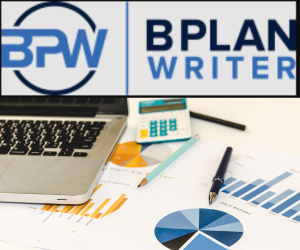In today’s fast-paced business environment, efficiency is key to staying competitive and achieving long-term success. One of the most effective ways to enhance efficiency is by streamlining business processes. Streamlining involves simplifying or eliminating unnecessary steps in workflows to improve productivity, reduce costs, and enhance overall business performance. This article provides a detailed guide on creating a business plan focused on streamlining processes.
Introduction to Streamlining Processes
Streamlining processes is about making your business operations more efficient by removing bottlenecks, reducing redundancy, and automating tasks where possible. The goal is to optimize resources, minimize waste, and deliver better value to customers. A streamlined business not only operates more smoothly but also adapts more quickly to changes in the market.
Key Components of a Streamlining Processes Business Plan
A business plan focused on streamlining processes should cover several critical components. Each section will provide a roadmap for identifying inefficiencies and implementing changes that drive operational excellence.
1. Executive Summary
The executive summary is a high-level overview of your plan. It should succinctly outline your goals for streamlining processes, the expected benefits, and the overall approach. Key points to include are:
- Purpose of streamlining processes
- Brief description of current operational challenges
- Summary of expected outcomes (e.g., cost savings, improved productivity)
- Overview of implementation strategy
2. Business Overview
Provide a detailed overview of your business, including its mission, vision, and values. Describe the current state of operations and identify key areas where inefficiencies exist. This section sets the context for why streamlining is necessary and highlights the potential impact on the business.
3. Process Analysis
Conduct a thorough analysis of your existing processes to identify inefficiencies. This analysis should include:
- Mapping Current Processes: Use flowcharts or process maps to visually represent workflows.
- Identifying Bottlenecks: Pinpoint steps that cause delays or require excessive resources.
- Evaluating Resource Allocation: Assess how resources (time, money, personnel) are currently utilized.
- Gathering Feedback: Collect input from employees and stakeholders who are directly involved in the processes.
4. Goals and Objectives
Clearly define your goals for streamlining processes. These should be specific, measurable, achievable, relevant, and time-bound (SMART). Examples of goals might include:
- Reducing process cycle times by 20% within six months
- Decreasing operational costs by 15% over the next year
- Improving customer satisfaction scores by enhancing service delivery efficiency
5. Strategy for Streamlining
Outline the strategies you will use to streamline processes. This may involve several approaches, including:
- Process Redesign: Simplify or eliminate unnecessary steps in workflows.
- Automation: Implement technology solutions to automate repetitive tasks.
- Lean Methodology: Apply lean principles to minimize waste and optimize resource use.
- Standardization: Develop standardized procedures to ensure consistency and efficiency.
6. Technology and Tools
Identify the technology and tools that will support your streamlining efforts. This may include:
- Business Process Management (BPM) Software: Tools that help model, analyze, and optimize business processes.
- Enterprise Resource Planning (ERP) Systems: Integrated software solutions that manage core business processes.
- Automation Tools: Robotic Process Automation (RPA) or other automation technologies to handle repetitive tasks.
7. Implementation Plan
Detail the steps required to implement your streamlining strategies. This should include:
- Timeline: A detailed schedule outlining when each phase of the implementation will occur.
- Milestones: Key milestones to track progress and ensure the project stays on track.
- Resource Allocation: Identification of the resources (personnel, budget, technology) needed for implementation.
- Change Management: Strategies for managing change and ensuring buy-in from employees and stakeholders.
8. Monitoring and Evaluation
Describe how you will monitor and evaluate the effectiveness of your streamlining efforts. This should involve:
- Key Performance Indicators (KPIs): Metrics to measure success (e.g., process cycle time, cost savings, customer satisfaction).
- Regular Reviews: Scheduled reviews to assess progress and make necessary adjustments.
- Continuous Improvement: A commitment to ongoing evaluation and refinement of processes.
Benefits of Streamlining Processes
Streamlining processes can yield numerous benefits for your business, including:
- Increased Efficiency: Faster, more efficient processes reduce the time and resources required to complete tasks.
- Cost Savings: Eliminating waste and optimizing resource use lowers operational costs.
- Improved Quality: Streamlined processes often result in higher quality outputs and fewer errors.
- Enhanced Customer Satisfaction: Faster, more reliable service leads to better customer experiences.
- Greater Agility: Efficient processes allow your business to adapt more quickly to market changes and new opportunities.
you may also read: MyBookie Sportsbook Review: Unveiling the Ultimate Betting Experience
Challenges and Solutions
While the benefits of streamlining are clear, the process can present challenges. Common obstacles include:
- Resistance to Change: Employees may be resistant to new processes or technologies. Solution: Implement a comprehensive change management strategy, including training and clear communication about the benefits.
- Initial Costs: The upfront investment in technology and training can be significant. Solution: Focus on the long-term ROI and phased implementation to spread out costs.
- Maintaining Quality: There’s a risk that in pursuit of efficiency, quality might be compromised. Solution: Ensure that quality control measures are integrated into new processes.
Conclusion
A well-crafted business plan focused on streamlining processes can transform your operations, leading to significant improvements in efficiency, cost savings, and customer satisfaction. By following the steps outlined in this guide—conducting a thorough process analysis, setting clear goals, leveraging technology, and implementing robust monitoring mechanisms—you can create a streamlined, agile, and highly competitive business.
Remember, the journey to streamlined processes is continuous. Regularly reviewing and refining your workflows will ensure that your business remains efficient and responsive to new challenges and opportunities.
